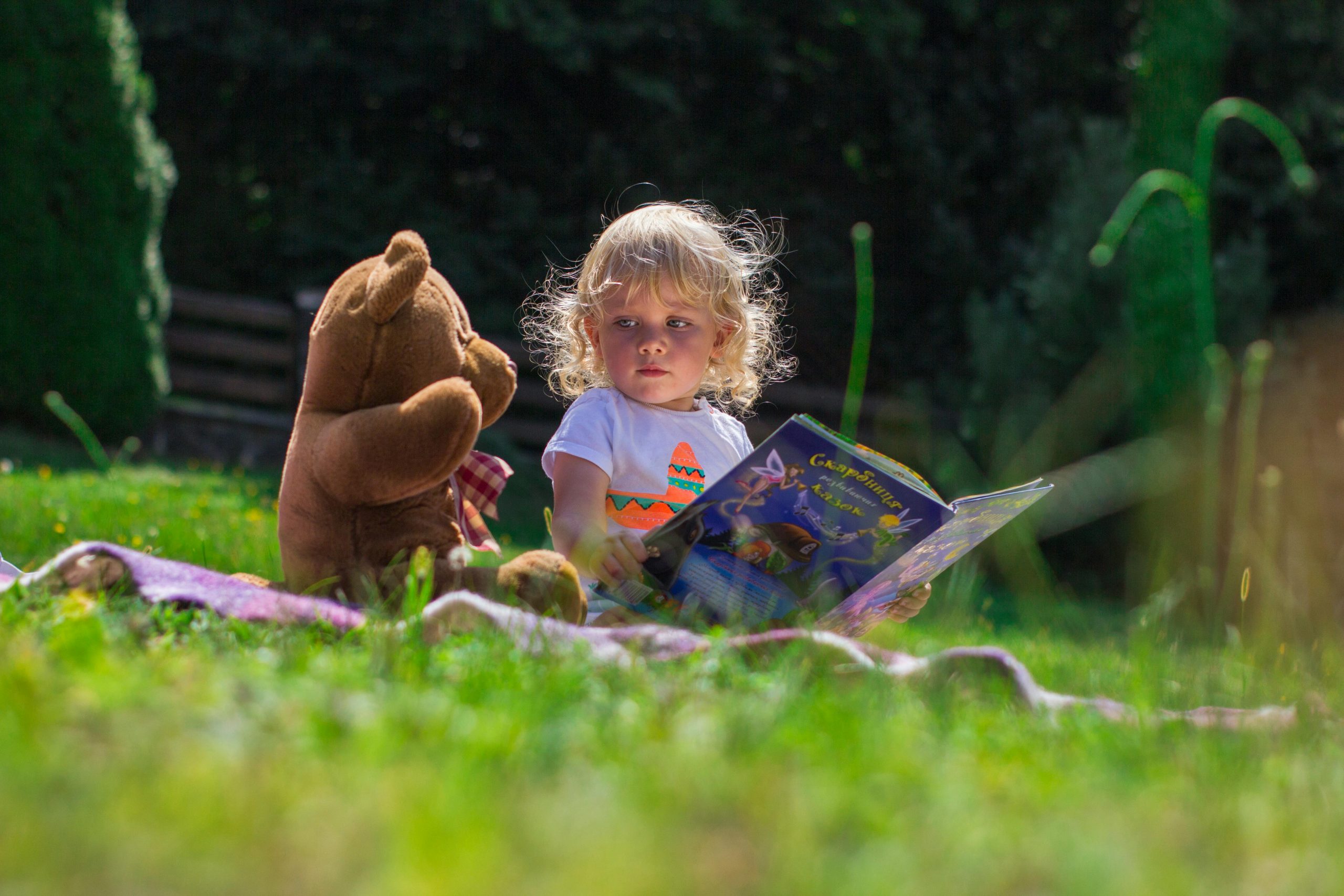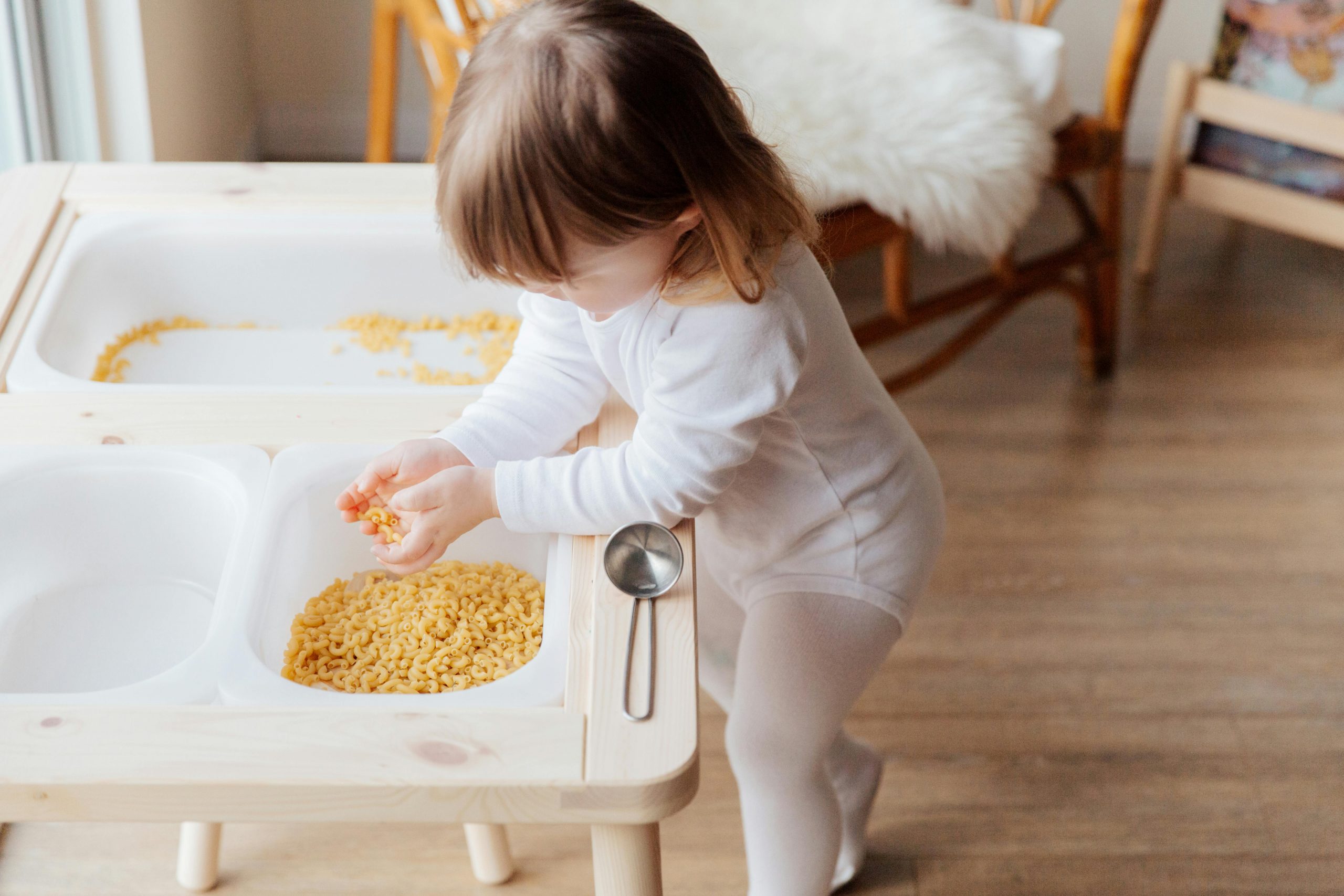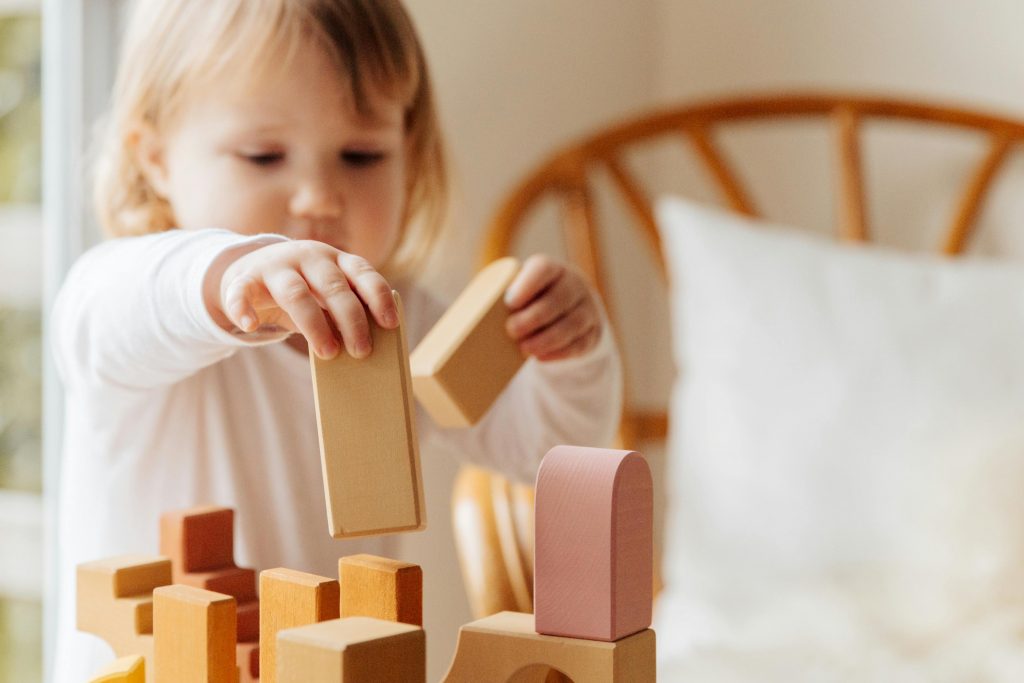As parents, we’re always looking for ways to support our toddler’s growth—whether it’s introducing the right foods, reading bedtime stories, or choosing the best toys. One simple but powerful activity that supports early development is sensory play.
But what exactly is sensory play? And how does it help your toddler’s brain grow?
This article dives into the cognitive benefits of sensory play for toddlers, giving you clear, practical insight into why these hands-on activities matter—and how you can support your child’s learning at home.
What Is Sensory Play for Toddlers?
Sensory play refers to any activity that stimulates a child’s senses: touch, smell, taste, sight, hearing, and even movement and balance (proprioception and vestibular senses).
For toddlers, this might look like:
- Squishing play-dough
- Pouring water between cups
- Playing with sand
- Listening to different sounds
- Exploring scented objects
Sensory play is more than just messy fun—it lays the groundwork for cognitive development, helping your child build skills they’ll use for life.
Why the Toddler Years Are Crucial for Brain Development

Between ages 1 and 3, a child’s brain develops at an astonishing rate. Neural connections are forming by the millions—especially when children are actively engaged in exploring their environment. This is where sensory play becomes a powerful tool.
By engaging in activities that involve the senses, toddlers create and strengthen neural pathways related to:
- Problem-solving
- Language
- Focus and attention
- Memory
- Decision-making
Let’s explore each of these cognitive benefits in more detail.
1. Sensory Play Builds Stronger Neural Pathways
When toddlers interact with the world through their senses—touching squishy textures, hearing new sounds, or moving their bodies—they’re actually helping their brains grow. These experiences stimulate the formation of synaptic connections in the brain, laying the foundation for thinking, learning, and decision-making.
How it helps:
- Repeated sensory experiences strengthen brain pathways through practice and reinforcement
- Using multiple senses at once creates richer, longer-lasting memories
- Active exploration helps toddlers make sense of their environment through real-world interaction
Every scoop of rice or splash of water is more than fun—it’s brain wiring in progress.
2. Boosts Problem-Solving and Logical Thinking
Simple sensory activities—like pouring water from one cup to another or figuring out how to pick up slippery objects—encourage toddlers to solve problems through hands-on experimentation. They begin to understand how actions have consequences and learn how to adjust their behavior to achieve a goal.
Sensory play encourages:
- Trial and error: trying different ways to make something work
- Cause-and-effect understanding (e.g., “What happens when I squeeze this sponge?”)
- Sequencing and logical reasoning, such as sorting objects by size or texture
Tip: Provide open-ended materials—like cups, scoops, or bins with different textures—and let your child explore freely. You’re helping them become critical thinkers without needing to give instructions.
3. Enhances Focus and Attention Span
Toddlers are naturally full of energy and curiosity, but sensory play can offer the kind of deep engagement that helps them settle and focus. When their hands are busy and their senses are activated, they become more absorbed in the task at hand.
Here’s why sensory play improves focus:
- It promotes hands-on attention, which is more engaging than passive activities
- It supports emotional regulation, which reduces distraction caused by frustration or overstimulation
- Tasks with tactile or auditory feedback provide grounding sensory input that encourages concentration
Building attention through play helps toddlers prepare for more structured learning later on—like reading, listening, or working through multi-step tasks.
4. Supports Language Development
Language doesn’t just come from reading books—it also grows through experiences. Sensory play gives toddlers something to talk about. Whether they’re describing textures, asking questions, or narrating their actions, these interactions help expand their vocabulary and communication skills.
Sensory play boosts language by:
- Introducing new descriptive words like rough, slippery, sticky, or crunchy
- Sparking curiosity and prompting questions (“Why is this cold?” “What’s that sound?”)
- Encouraging dialogue between caregiver and child during shared activities
Play idea: Fill a sensory bin with various objects (sponges, cotton balls, plastic animals) and ask your toddler to describe what they feel. This simple game builds vocabulary in a fun, interactive way.
5. Improves Memory and Recall
Sensory experiences are deeply connected to memory. Because they involve multiple areas of the brain, they tend to be easier to store and retrieve later. Toddlers who learn through hands-on exploration often remember more than they would from passive exposure.
How sensory play supports memory:
- Real-life, sensory-rich learning is easier to recall than abstract concepts
- Activities that repeat—like sorting, stacking, or scooping—reinforce memory through practice
- Multisensory experiences (combining sight, sound, and touch) deepen retention
A toddler who plays with scented play-dough or sorts colorful cereal pieces is making real-world associations they’re likely to remember over time.
6. Encourages Independent Exploration and Decision-Making
Sensory play empowers toddlers to take charge of their learning. Instead of following step-by-step instructions, they decide how to engage with the materials. This kind of independent discovery builds confidence, critical thinking, and executive functioning.
Sensory play encourages:
- Confidence in trying new things and making choices
- Curiosity and self-directed exploration
- Cognitive flexibility—starting, stopping, and switching between tasks independently
This freedom to explore helps toddlers become problem-solvers who trust their own instincts, a skill that carries into school and everyday life.
7. Helps Toddlers Process and Regulate Emotions
Sensory play can have a calming, therapeutic effect—especially for toddlers who don’t yet have the words to express how they feel. Activities like squishing play-dough or watching water swirl can reduce anxiety and give children a safe way to release stress.
Examples of sensory activities that support emotional regulation:
- Kneading dough or squeezing soft putty to release frustration
- Splashing or pouring water to self-soothe
- Running fingers through kinetic sand to promote calm and focus
These soothing sensory experiences help toddlers recognize their own emotions and begin to regulate them—an essential foundation for emotional intelligence and social skills.
What Sensory Play Looks Like at Home (with Low Prep)

You don’t need a Pinterest-perfect setup to support sensory play. Here are some easy, brain-boosting ideas using things you probably already have:
Touch-Based Ideas
- Cooked spaghetti with food coloring
- Sensory bags (ziplock bags with hair gel, beads, or glitter)
- Felt, cotton balls, foil, and sponge squares for texture exploration
Sound-Based Ideas
- Shakers made from containers filled with rice, beans, or bells
- Listening walks: identify birds, cars, wind, or dogs barking
Movement-Based Ideas
- Balancing on pillows or cushions
- Obstacle courses with crawling, jumping, and rolling
Smell and Taste Ideas (with supervision)
- Spices like cinnamon, basil, or cloves
- Lemon slices or mint leaves for scent/taste comparison
How Intentionally Designed Toys Boost the Benefits of Sensory Play
While sensory play can easily happen at home with everyday items like water, rice, or textured fabrics, research shows that intentionally designed multisensory toys can take a child’s learning to the next level—especially during the critical toddler years.
Studies in early childhood education and developmental psychology have highlighted toy design elements that deeply support learning. Toys that combine texture, sound, color, and movement not only capture a toddler’s attention for longer but also promote deeper, more immersive exploration—and that’s where true cognitive development takes root.
What Makes a Toy “Developmentally Smart”?
Here are some key design features researchers recommend:
- Multisensory engagement: Combining touch, sight, and sound offers a richer experience and helps form stronger neural connections.
- Built-in goals: Toys that encourage task completion—like fitting shapes or pressing buttons in sequence—support problem-solving and logical thinking.
- Responsive feedback: Toys that light up, make sounds, or move in response to a child’s action help reinforce learning and give toddlers a sense of progress.
- Emotional connection: Enjoyable, soothing, or interactive toys can enhance attention, memory, and motivation through positive emotional experiences.
These thoughtfully designed toys don’t just entertain—they offer a more purposeful kind of play that builds focus, confidence, and essential cognitive skills.
When and How to Use Designed Toys Alongside DIY Play
Homemade sensory activities are wonderful for flexibility and creativity. But adding a few well-designed sensory toys can give toddlers new opportunities to engage more deeply—especially as they begin to seek out challenges and experiment with cause and effect.
When do these toys work best?
- Your toddler is starting to push buttons, match shapes, or open latches out of curiosity
- You’re introducing more structured learning like sorting, building, or sequencing
- Your child benefits from clear responses and feedback from what they do
- You need screen-free, attention-holding activities that promote independent play
Tips for using these toys with intention:
- Let your child lead. Avoid directing every step—allow your toddler to explore the toy in their own way.
- Mix and match. Combine a designed toy (like a shape sorter) with real-world versions (bowls, spoons, or kitchen tools) to extend the experience.
- Rotate toys. Don’t offer everything at once. Rotating toys keeps them fresh and encourages deeper engagement over time.
What should parents look for?
You don’t need an entire shelf of educational toys—just a few carefully selected ones that:
- Provide varied sensory input like textures, lights, or sounds
- Encourage hands-on experimentation and open-ended play
- Adapt to your toddler’s skill level and grow with them
By blending DIY sensory setups with research-backed, intentionally designed toys, you create a well-rounded learning environment that supports your toddler’s brain development while also being fun, practical, and nurturing.
How Often Should Toddlers Do Sensory Play?
There’s no strict rule, but aim to provide at least 15–30 minutes a day of unstructured sensory play. It doesn’t need to be elaborate—just hands-on and engaging.
Signs your child is benefiting:
- They’re more focused after playing
- They start exploring materials in new ways
- They use more words to describe what they’re doing
- They ask to repeat the activity again and again
Is Sensory Play Always Messy?
Not at all. While some sensory activities involve water, slime, or sand, many options are tidy and contained. If mess is a concern, try:
- Sensory bottles (sealed containers filled with glitter, oil, or beads)
- Sensory bags (ziplock bags with textures inside)
- Dry materials like pasta, pompoms, or stacking cups
Plus, a bit of mess is often worth it—cleaning up can be part of the learning experience!
When to Start Sensory Play with Your Toddler
Most toddlers can begin exploring basic sensory activities around 12 months, with increasing complexity as they grow. By 18–24 months, they’re ready for:
- Scooping and pouring
- Textural exploration (soft vs. rough)
- Color sorting and matching
- Basic pretend play using sensory tools (e.g., a “kitchen” with water and soap)
As always, supervise your child, especially if using small items.
Closing Thoughts: Why Sensory Play for Toddlers Is Worth Your Time
Sensory play is more than an activity—it’s a brain-building experience. From boosting memory and attention to supporting emotional growth and language, it touches nearly every area of your toddler’s development.
And best of all? It doesn’t require screens, fancy tools, or expensive toys.
Just time, space, and a little encouragement.
So the next time your toddler wants to play with water, rice, or dough—know that their brain is hard at work, even as they giggle and splash.

